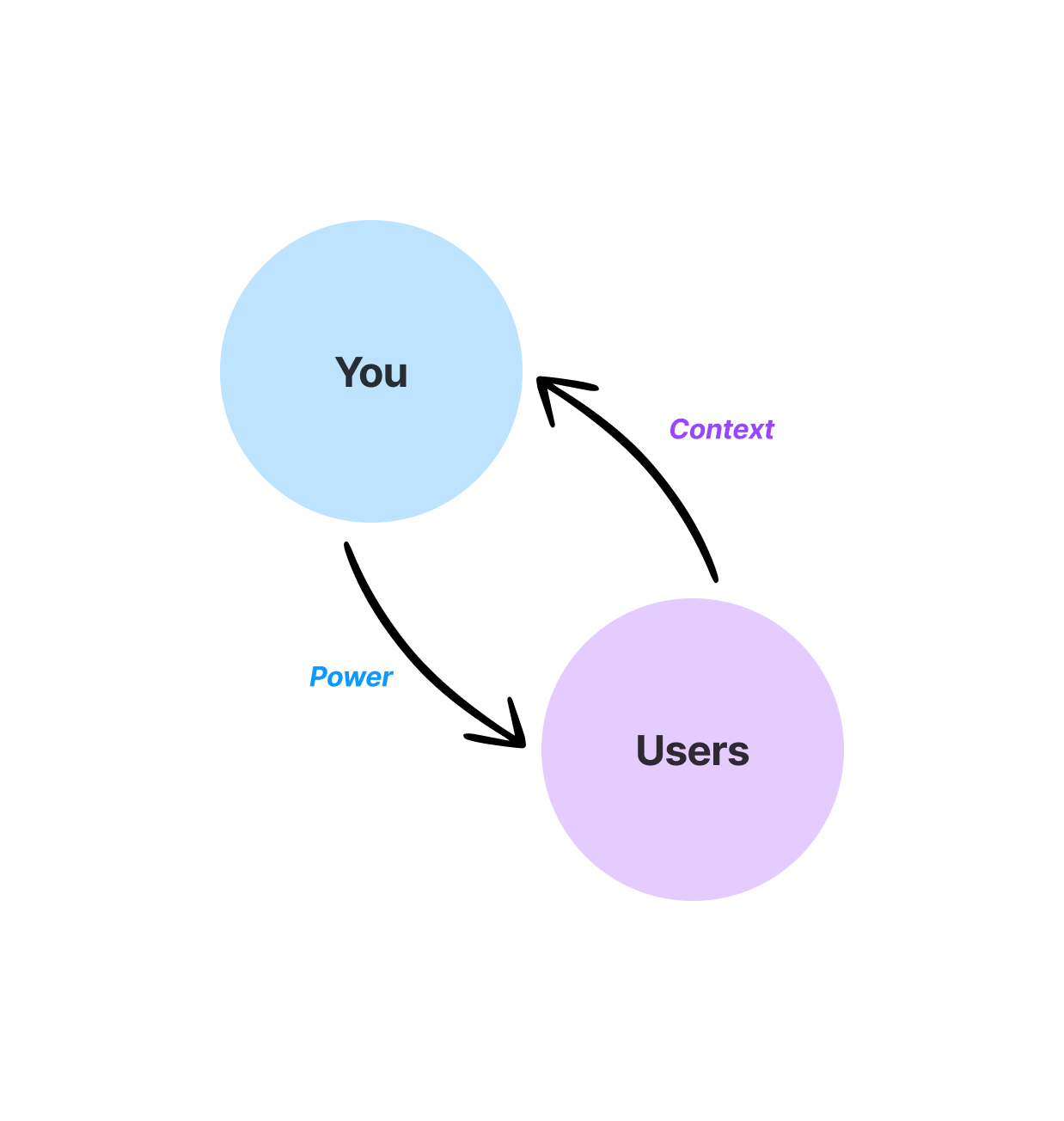Over the years, I have worn different hats when it comes to user interviews, or when it comes to “talking to users” more generally -
Earlier in my career, I’d act as a stenographer of sorts - trying to copiously and accurately record whatever context and information the user was willing to share with me, in response to my standard-issue questions and script. This was essentially a data collection and analysis role.
With some experience and reps, I began to operate as a detective - wading through hints, clues and innuendos to unravel the mystery of the case i.e. the key insight that would shape our product strategy. My mindset was to quickly identify the villainous ‘key user pain points’ that we can arrest via our awesome product.
In recent years, I’ve shifted to approaching these settings more so as a geologist - focused less on solving a specific problem or answering a specific research question, and more on understanding & explaining the world of my users from a truth-seeking perspective. With the intent to build better product sense, and make better decisions writ large.
As you can imagine, these roles often lead to achieving different outcomes. In practice, depending on the nature of the research (ex: tactical research to get feedback on a prototype vs. open-ended or foundational research to shape long-term strategy) - we need to be able to flex these different hats and more.
In today’s essay, I will share more about the motivation behind the geologist role. Before we go deeper, I’d like to draw your attention to this particular part of Jeff Weinstein’s excellent interview on
’s podcast. Jeff speaks to the value of silence & deep curiosity when it comes to user interviews - which is key to playing the geologist role.Trading power for context
A typical user interview juxtaposes two different worlds - the world of your user (i.e. their goals, problems, needs, fears, relationship with you…) with the realities of your world that you carry in your head (i.e. your company, your product, your team, your OKRs!). This juxtaposition highlights a key tension that you need to be cognizant of -
To bridge an asymmetry of information & context i.e. the fact that the user knows more about their world than we do…
We must combat an asymmetry of power: the fact that we are leading the interview, and they are reacting to us.
What Jeff talks about - the difference between pitching users vs. engaging with silence & curiosity - is effectively a trade of some amount of power to gain much more context.
The implication of this is that if you wish to have a deeper understanding of the world of your users - they need to take some of the steering wheel in the conversation. Or said differently, you need to go off-script if you wish to tell a fuller, richer story.
The strata of the world of our users
User feedback tends to be layered in nature. I liken it to the earth’s strata.
Much of the user feedback that our teams engage with on a daily basis is surface-level a la the crust or mantle of the world’s surface. It is the visible, visceral and immediate type of feedback. It is the feedback that is often reactive in nature (ex: support requests, sales objections) or the feedback that is easiest to validate with quant analyses (ex: “70% of users drop-off at this point in the funnel, so they probably find this step confusing or painful”). This feedback is valuable, but only represents a subset of the full truth.
The true holy grail of product discovery is to get deeper into the outer & inner core of what is motivating, exciting, scaring or influencing them. The core includes but is strictly not limited to the intersection of their world & your product. In fact, in many cases, the most impactful learnings here have nothing to do with your product (or at least the current incarnation of it). If you are able to go deeper, you can unlock insight from users that is more proactive, substantive and differentiated than the surface-level feedback that we encounter regularly. Insights here can dramatically change the nature of your product strategy (as in Jeff’s example: “I guess we’re an identify company now!”).
Skilled, experienced researchers instinctively understand the distinction between surface layer feedback and deeper, core insight. They are equipped with the tools, techniques and tricks needed to evolve from a stenographer or detective role to a geologist role when needed. And how to trade power in a user interview to gain more context. If you are lucky enough to work with such folks, you’re in great hands!
If you are seeking to play the geologist role yourself, I would encourage you to practice & lean into three key facets -
Trust-building: as Jeff mentions, going deep can be an awkward experience for your user. The conversation & questions are likely atypical for them, and they need to be vulnerable to answer them authentically. No matter how clever you are with your prompts or scripts, this won’t happen without them having trust in you. You need to be very clear & upfront with your intentions, and create an environment where they are comfortable helping you help them.
Excavation > explanation: adapt the nature of your interviewing to try to excavate the world of your users vs. explain it. The most tangible form of doing this would be to adapt your questions to be less close-ended (ex: “rank X, Y or Z in terms of what’s most important to you”) and more open-ended (ex: “if you could only focus on 1 thing with no distractions, what would it be?”).
Gravitational pull: geologically speaking, it is the dense, core layers of the earth that are the source of its gravitational force and magnetic field. Similarly (to the flip-side of #1) you may be surprised how much your users actually crave the opportunity to go deeper into their problems, pains, hopes and dreams with you. When offered an environment of genuine trust, empathy & curiosity…many of us have a basic human impulse to share & bring others into our inner worlds.





